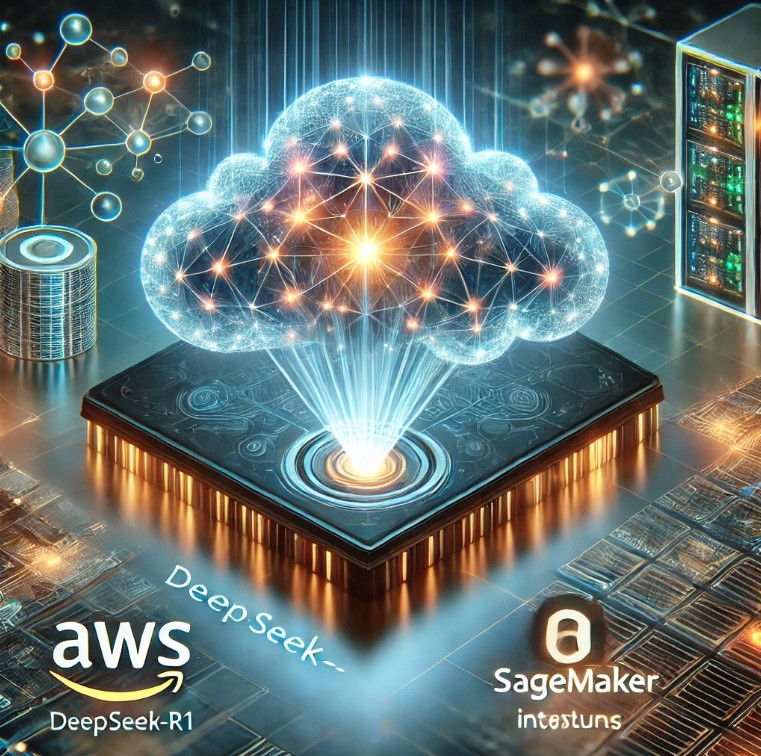Table of Contents
Introduction
The advent of DeepSeek-R1 models on AWS has opened new frontiers in artificial intelligence (AI), making it easier for businesses and developers to harness the power of deep learning with high performance and scalability. Whether you’re a data scientist, AI researcher, or enterprise seeking AI-driven solutions, AWS provides a robust and scalable infrastructure to deploy DeepSeek-R1 models efficiently.
This article explores DeepSeek-R1 models now available on AWS, their applications, setup processes, and practical use cases. We will also address frequently asked questions (FAQs) to ensure a smooth deployment experience.
What Are DeepSeek-R1 Models?
It is a state-of-the-art AI model designed for deep learning applications, excelling in tasks such as:
- Natural Language Processing (NLP) – Chatbots, language translation, and text summarization.
- Computer Vision – Image recognition, object detection, and automated image captioning.
- Generative AI – AI-powered content generation and creative applications.
- Predictive Analytics – AI-driven forecasting in finance, healthcare, and more.
With AWS, users can deploy these models seamlessly, benefiting from optimized compute power, managed AI services, and cost-efficient infrastructure.
Benefits of Deploying DeepSeek-R1 on AWS
1. Scalability & Performance
AWS offers scalable EC2 instances, Amazon SageMaker, and AWS Inferentia-powered instances, enabling users to run AI workloads efficiently.
2. Managed AI Services
AWS integrates with services like Amazon S3, AWS Lambda, and AWS Fargate to streamline data storage, model inference, and automation.
3. Cost-Optimization
Pay-as-you-go pricing with options like AWS Spot Instances and AWS Graviton processors reduces operational costs.
4. Security & Compliance
AWS provides end-to-end encryption, IAM (Identity and Access Management), and compliance with industry standards like HIPAA and GDPR.
Setting Up DeepSeek-R1 Models on AWS
1. Choosing the Right AWS Service
To deploy DeepSeek-R1, select an AWS service based on your requirements:
- Amazon SageMaker – For fully managed model training and deployment.
- EC2 Instances (GPU-powered) – For custom deployments.
- AWS Lambda + API Gateway – For serverless AI inference.
2. Setting Up an AWS Environment
Follow these steps to configure your AWS environment:
- Create an AWS Account
- Sign up at AWS Console.
- Set Up IAM Roles
- Grant necessary permissions for EC2/SageMaker.
- Provision an EC2 Instance
- Select an appropriate GPU instance (e.g.,
g4dn.xlarge).
- Select an appropriate GPU instance (e.g.,
- Install Dependencies
- Set up TensorFlow/PyTorch with the following command:
pip install torch torchvision transformers boto3
- Set up TensorFlow/PyTorch with the following command:
- Download the DeepSeek-R1 Model
- Fetch pre-trained models from an AI repository:
from transformers import AutoModel
model = AutoModel.from_pretrained("deepseek-r1")6. Deploy on SageMaker – Use the SageMaker SDK to deploy models.
import sagemaker
from sagemaker.pytorch import PyTorchModel
model = PyTorchModel(model_data="s3://your-model-bucket/model.tar.gz",
role="your-iam-role", framework_version="1.8.1")
predictor = model.deploy(instance_type="ml.g4dn.xlarge")Use Cases and Examples
1. Text Summarization with DeepSeek-R1 on AWS Lambda
Deploying DeepSeek-R1 for text summarization using AWS Lambda:
import json
import boto3
def lambda_handler(event, context):
input_text = event["text"]
summary = deepseek_r1_summarize(input_text) # Custom function
return {
"statusCode": 200,
"body": json.dumps({"summary": summary})
}2. Image Classification with Amazon SageMaker
Using DeepSeek-R1 for image classification with SageMaker:
from sagemaker import get_execution_role
from sagemaker.tensorflow import TensorFlow
role = get_execution_role()
model = TensorFlow(entry_point="train.py",
role=role,
train_instance_type="ml.p2.xlarge")
model.fit({"train": "s3://your-bucket/train-data"})FAQ Section
1. What are the hardware requirements for DeepSeek-R1 on AWS?
DeepSeek-R1 requires high-performance GPUs like NVIDIA A100/T4 or AWS Inferentia-based instances.
2. Can I deploy DeepSeek-R1 using AWS Lambda?
Yes, AWS Lambda supports lightweight AI inference tasks. However, for deep learning workloads, EC2 or SageMaker is recommended.
3. How do I optimize costs when deploying DeepSeek-R1?
- Use Spot Instances for cost savings.
- Leverage AWS Savings Plans for predictable workloads.
- Choose AWS Inferentia-based instances for efficient AI inference.
4. Is there a free tier option for DeepSeek-R1 on AWS?
AWS Free Tier provides limited compute credits for SageMaker, but GPU-based workloads typically require a paid plan.
5. How do I scale DeepSeek-R1 workloads on AWS?
AWS provides Auto Scaling, Elastic Load Balancing, and Batch Processing via AWS Batch to handle high-demand AI applications.

External Resources
Conclusion
Deploying DeepSeek-R1 models on AWS provides unparalleled advantages in AI development, offering scalability, efficiency, and cost-effectiveness. With AWS’s extensive AI infrastructure, businesses can integrate AI capabilities seamlessly into their workflows. By leveraging Amazon SageMaker, EC2 GPU instances, and AWS Lambda, users can optimize model training and inference for various applications.
By following the guidelines in this article, you can successfully deploy and manage DeepSeek-R1 models on AWS, unlocking new AI possibilities for your organization. Thank you for reading the DevopsRoles page!

